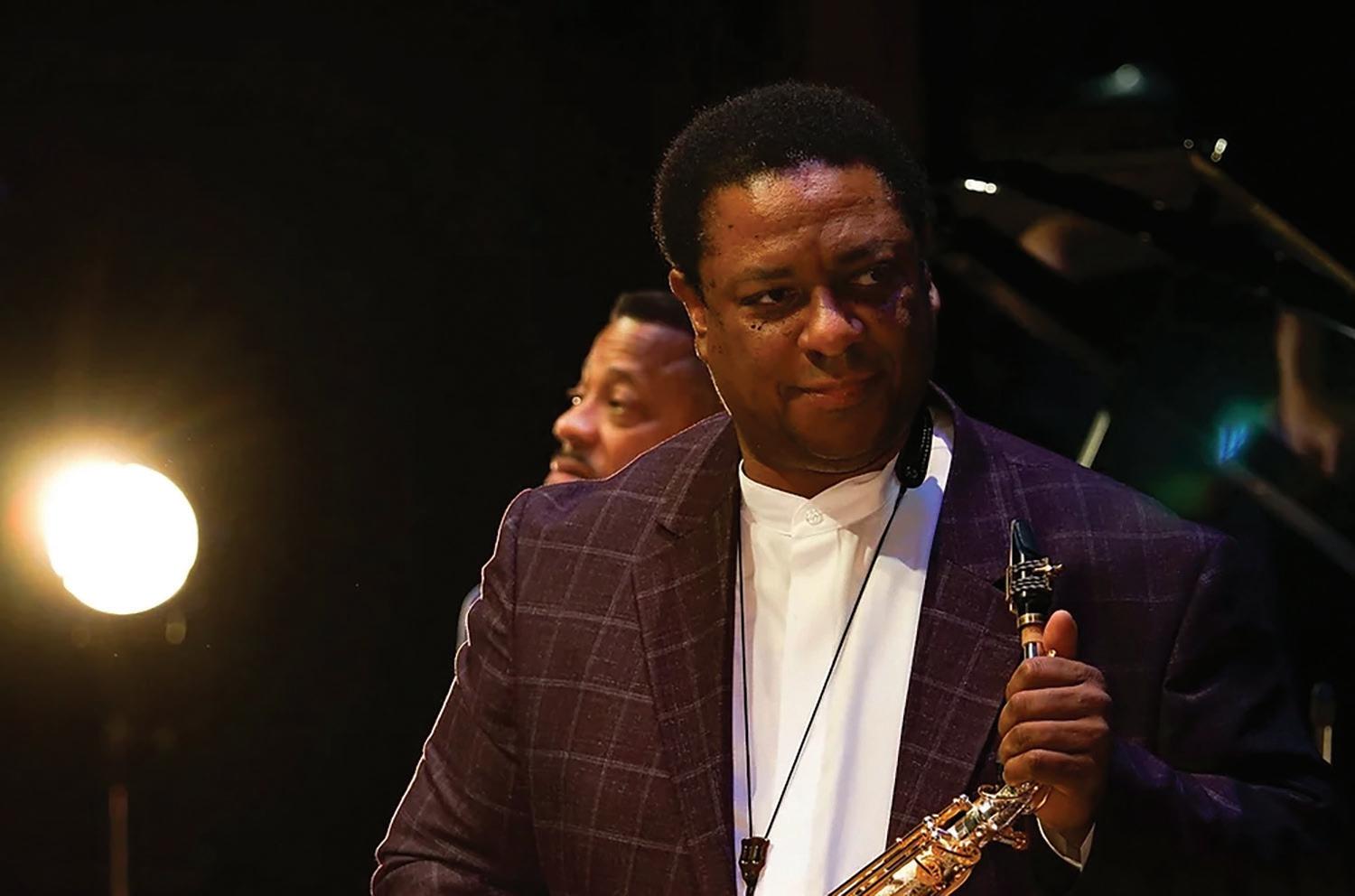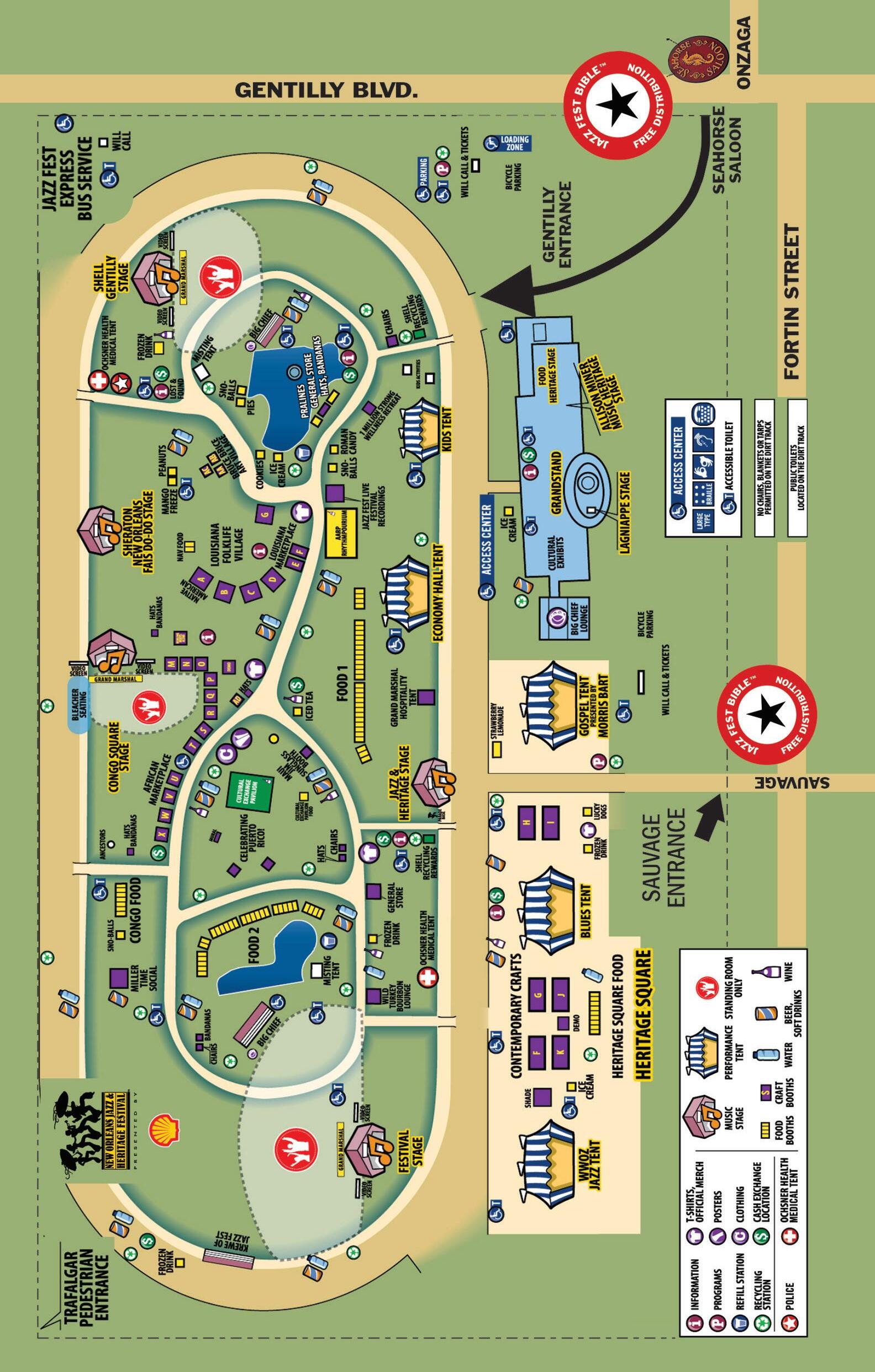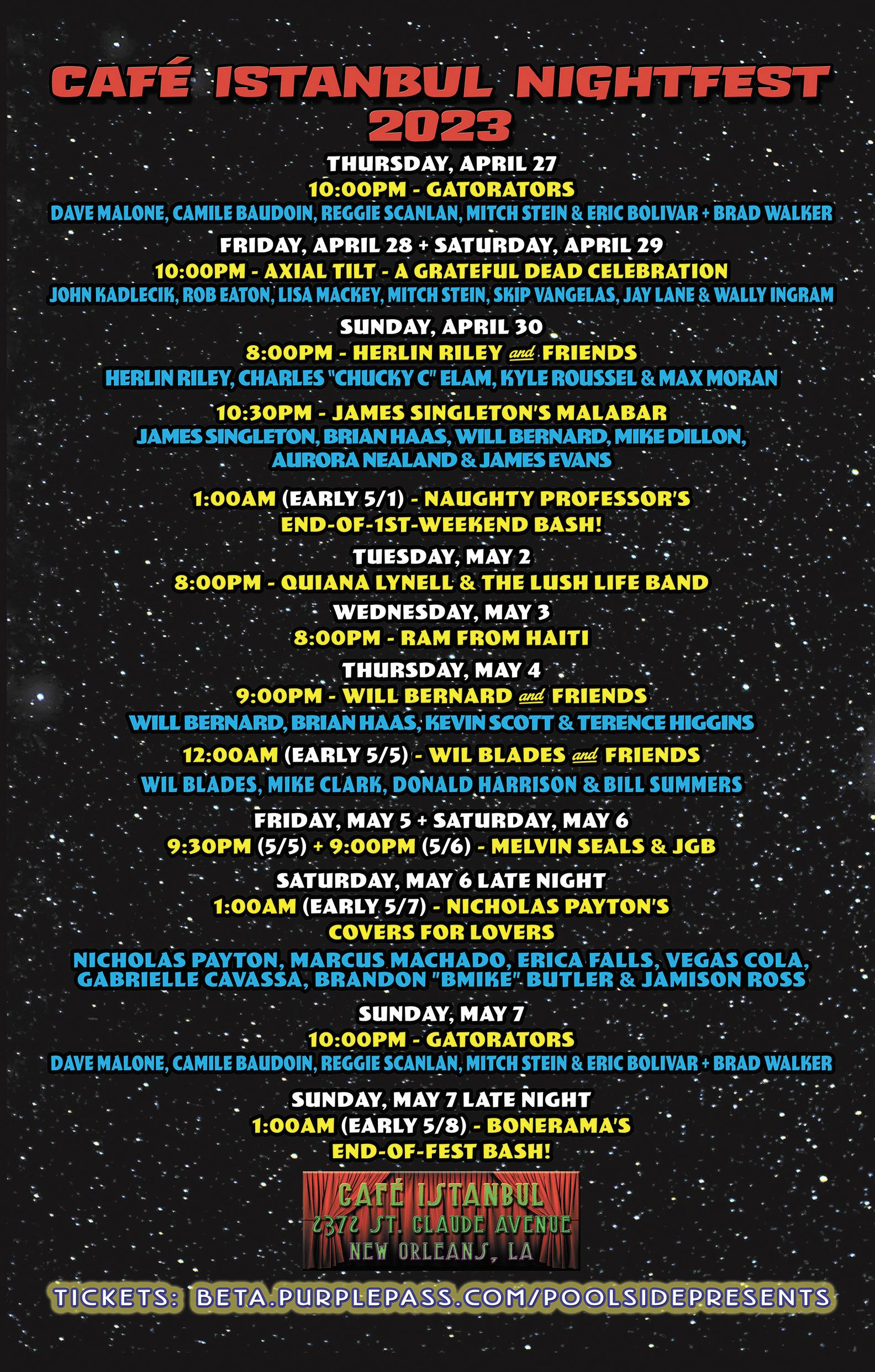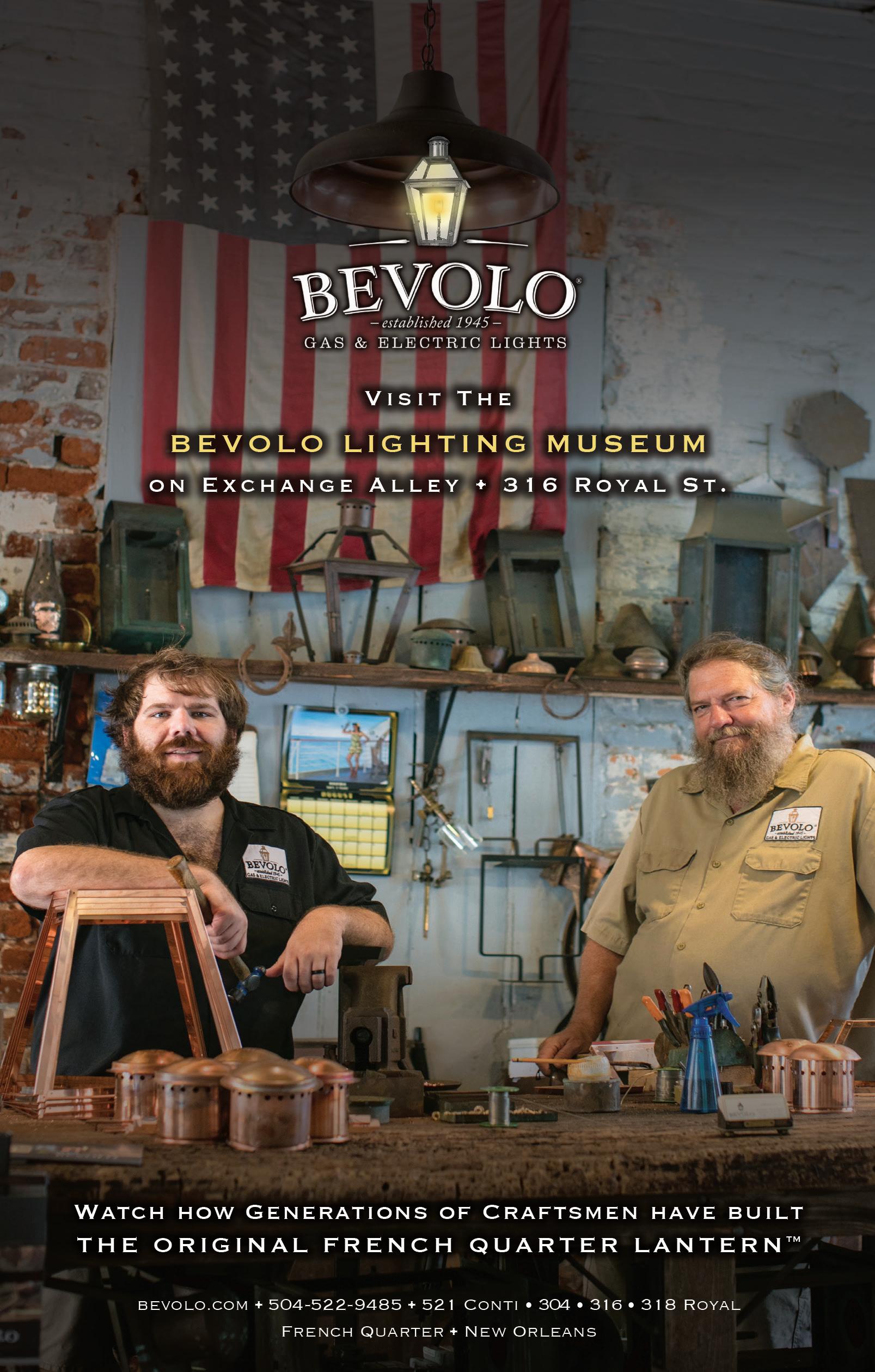
4 minute read
All The Crunchberries
Something Else! is infectious soul-jazz with a powerhouse lineup
BY STEVE HOCHMAN
Vincent Herring goes off on a surprising tangent when trying to describe soul jazz, the sub-genre given tribute by the group Something Else!, a stars-filled ensemble which the saxophonist created a few years back and still leads. It’s a powerhouse lineup, with tenor saxophonist James Carter, trumpeter Randy Brecker, pianist Dave Kikoski, guitarist Paul Bollenback, bassist Essiet Okon Essiet and drummer Lewis Nash—all acclaimed forces in their own rights—joining Herring when the group plays in the Jazz Tent on the first Friday of Jazz Fest. Hearing him talk about the music they’ll be playing, though, is not unlike hearing a jazz musician start a solo with a bit of a familiar children’s tune and wondering with delight where it will go.
“Some years ago,” he says from his New York
City home, “Kellogg’s or General Mills, whoever makes Lucky Charms—and I wouldn’t be caught dead eating this, but it fits—they came out with a version of the cereal that was all the marshmallows. It was just like all the charm.”
He pauses for a second to consider how that applies to this music.
“And so, this is like kind of all the charm, just like every melody that you know, subconsciously or not,” he says. “And it’s still great jazz soloists taking you through a variety of music. And it’s fun for me and fun for all the guys in the band. And hopefully it’s infectious to the audiences. Every time we’ve played, audiences are super-engaged and love the music. I haven’t always had that kind of euphoric experience with every audience, but with this band without even trying, it comes off that way for some reason.”
He re-thinks the analogy, afraid it could give a wrong impression, that the music this band does is all sugar, all fluff. “All the marshmallows, that’s bad!” he says. “I shouldn’t even say that. But it’s kind of like that.”
This, by the way, comes after an hour of talking about Something Else! “You know I have this grand problem of description,” he says.
But the truth is that what Something Else! does, and soul jazz itself, simply are hard to describe. Earlier in the conversation he gave it a more prosaic go: “You’ve got a beat and a groove,” he starts. “There’s usually a riff. There’s usually a melodic component to it. Very strong melodic component. You couple that with great soloists and it’s a recipe for an enjoyable evening where you can’t help but to feel the music and pat your foot, move your head—because that’s part of it.”
It was a feeling he had been missing, something he craved when a few years ago he and manager/ booking agent Ina Dittke came up with the Something Else! concept. When they started making calls to other musicians, they found many feeling the same way who were eager to join.
Generally, the soul jazz heyday is seen to have started in the mid-1950s as the more populist thread of post-bebop, running through the 1960s pop evolutions until morphing/splitting into smooth jazz and jazz-funk fusion in the early 1970s. Lee Morgan’s “Sidewinder” is a classic of the style. Ditto Horace Silver’s “Song For My Father” and Ramsey Lewis’ slightly later “The In Crowd.” Herring cites Donald Byrd, Freddie Hubbard, Stanley Turrentine, Herbie Hancock and George Benson among key practitioners. Guitarists Wes Montgomery and Grant Green are others often mentioned.
Even John Coltrane, for all his shattering of conventions, fits in via his classic renditions of “My Favorite Things” and “Chim Chim Cher-ee,” notes Herring, 58, who absorbed all this music while growing up in the San Francisco Bay Area. And there are the classic organ-centric combos, with Jimmy Smith, Larry Young, Brother Jack McDuff and Jimmy McGriff among the stars there.
One name looms large over this project: Cannonball Adderley. Somethin’ Else is a landmark 1958 Adderley album on which the saxophonist leads a group of Miles Davis (who wrote the bluesy title song), Hank Jones, Sam Jones and Art Blakey. Choosing the moniker for the band, with the added “g” and exclamation point for good measure, is tribute to Herring’s years playing with Adderley’s brother Nat and then, after Nat’s death in 2000, co-leading the Cannonball Adderley Legacy Band. After a stint in the United States Military Academy band the Jazz Knights, and then touring with vibes giant Lionel Hampton, Herring caught Nat’s attention and soaked up everything he could from playing that music.
“When I used to play with Nat, he said to me, ‘You know, one of the things I enjoy most about you, you feel like Cannonball, but you don’t play his notes. I love that about you,’” Herring recalls. “And I was like, ‘Well, I probably would play his notes if I could!’ We laughed and he thought I was kidding.”
But, Herring says, Adderley got—and rejected— audition tapes from players all over the country who did play his brother’s notes.
“He wanted someone that had their own personality, had a certain kind of euphoric feel,” he says. “It was a certain kind of jubilation to the music of Cannonball. And maybe I got it by osmosis.”
Wherever it came from, it’s a thread through his career which saw him as a regular in Cedar Walton’s band for 20 years, as well as playing with stars including Dizzy Gillespie, Art Blakey, Jack DeJohnette, Hubbard and Larry Coryell, Nancy Wilson, James Carter, Kenny Barron and Roy Hargrove among many others, not to mention recording 20 albums as a leader himself.
And the inspiration is something he tries to impart in his role as a professor at William Paterson University in Wayne, New Jersey, and teacher at the Manhattan School of Music. But it comes through most strongly, with this band in his approach both to the Adderley legacy and to that of the whole soul jazz universe.
“Do I see myself as a custodian of the music?” he asks. “No. Am I a custodian of the music? You know, I just really try to play things that I enjoy. I’m writing music. I play music from some other people. And when I list to it”—he laughs— it often sounds connected to those kind of things.”
Herring continues to consider the cereal analogy, hoping it doesn’t give the idea that this music lacks nutrition. This is music with as much substance as pure pleasure. But like a kid with a bowl of a sweet treat in front of him, he can’t help himself and tries another example.
“All the crunchberries,” he says, citing Cap’n Crunch’s favorites. “You know, I shouldn’t even say that one either. But it is kind of like that.” O



















